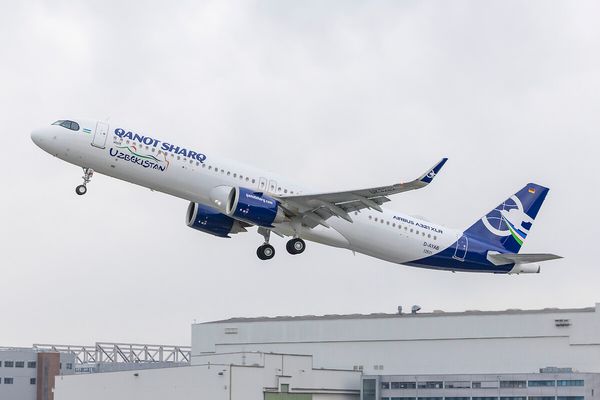Airport security has always been notorious for being strict and stringent. Anyone who has traveled through an airport knows that even to enter the security checkpoint, passengers must possess a valid airline ticket and identification.
This would be the case with a standard TSA security checkpoint. However, in recent history, we have seen various "fast-track" security and immigration programs enter the market hoping to streamline these otherwise dreaded formalities.

TSA PreCheck, Global Entry, and CLEAR are some of the most common names in the United States with regard to fast-track security and immigration programs. Because of the secure state of these programs and the extensive training that staff working in these programs have to undergo, one would think that major security breaches would be quite rare.
This is indeed the case with TSA and Global Entry. However, CLEAR has come under fire in light of two recent incidents involving poor security checks.
What is CLEAR?
The simplest way to put it is that CLEAR is basically a smaller, private version of TSA PreCheck. At certain airports, you will find CLEAR kiosks present at the security checkpoints.
Read more: TSA PreCheck vs CLEAR: Which is Better?
The idea here is that a passenger enrolled in CLEAR will walk up to the kiosk, which will then use biometric scanning technology to verify the passenger's identity. Once verified and boarding passes checked, the passenger will be escorted to a security checkpoint having bypassed the standard line.

CLEAR essentially eliminates the first two steps of a standard airport security check process: first waiting in line and then walking up to a TSA officer who will check your ID and boarding pass.
A CLEAR membership costs $189 per year, more expensive than TSA PreCheck which is $78 for five years.
What Happened?
This year, there have been two reports of improper passenger identification relating to CLEAR. In both cases, individuals who were not even enrolled in CLEAR still managed to clear the security checkpoints. To make matters worse, neither individual possessed a valid boarding pass nor were either of their identities verified by TSA officers.
It is unclear at this point how these individuals were able to even access the CLEAR machines despite not being members themselves.
As for the boarding passes, neither individual was supposed to fly that day.
One individual reportedly found an old boarding pass in the airport trash can and managed to clear (no pun intended) the checkpoint using that ticket.

The other passenger was said to have a valid boarding pass, but it was for a different airport.
Identifying and confirming the identity of passengers is one of the main jobs of CLEAR kiosks. The fact that the involved machines failed to realize that these passengers are not even enrolled in the program is a big wake-up call for the company.
CLEAR says that it has taken immediate action in response to these incidents. No details have been given on where these incidents took place, but CLEAR maintains that it has fired the employees responsible for allowing the involved passengers through the checkpoint. Furthermore, CLEAR has reported that it will be implementing further measures to prevent similar events.

In Conclusion
Air travel remains one of the safest forms of transport worldwide and a huge part of that is thanks to airport security practices.
If airport security breaches do occur — especially these days — it can pose a serious problem to passenger confidence in the industry. That is why it is so important for any security programs to be as fine-tuned as possible so that similar events do not transpire in the future.
Air Canada Rouge to Launch Boeing 737 MAX 8 Operations » Alaska Airlines Defends Home Turf with 7 Strategic New Routes for 2026 » KLM Strengthens European Network with Three Scenic Routes »
Comments (0)
Add Your Comment
SHARE
TAGS
NEWS TSA TSA PreCheck CLEAR Airport Security Security Check CLEAR Security Boarding Pass TrashRECENTLY PUBLISHED
 Should Students Have Homework? Better After-School Balance
Is homework bad for students? Explore learning benefits, stress, sleep, and smarter workload limits, so after-school time stays balanced.
STORIES
READ MORE »
Should Students Have Homework? Better After-School Balance
Is homework bad for students? Explore learning benefits, stress, sleep, and smarter workload limits, so after-school time stays balanced.
STORIES
READ MORE »
 Air Canada Rouge to Launch Boeing 737 MAX 8 Operations
Air Canada has officially confirmed a strategic shift for its leisure subsidiary, Air Canada Rouge, announcing that Boeing 737-8 (MAX 8) operations are slated to begin in late Q1 2026. The move marks the beginning of an ambitious year-long transition that will see Rouge evolve into an all-Boeing 737 operator.
ROUTES
READ MORE »
Air Canada Rouge to Launch Boeing 737 MAX 8 Operations
Air Canada has officially confirmed a strategic shift for its leisure subsidiary, Air Canada Rouge, announcing that Boeing 737-8 (MAX 8) operations are slated to begin in late Q1 2026. The move marks the beginning of an ambitious year-long transition that will see Rouge evolve into an all-Boeing 737 operator.
ROUTES
READ MORE »
 Qanot Sharq Takes Delivery of First Airbus A321XLR to Transform Central Asian Long Haul Travel
Uzbekistan’s premier private carrier, Qanot Sharq, has officially taken delivery of its first Airbus A321XLR. The delivery, which took place today at the Airbus facility in Hamburg, makes Qanot Sharq the launch operator for the ultra-long-range narrow-body in the Commonwealth of Independent States (CIS) and Central Asia.
ROUTES
READ MORE »
Qanot Sharq Takes Delivery of First Airbus A321XLR to Transform Central Asian Long Haul Travel
Uzbekistan’s premier private carrier, Qanot Sharq, has officially taken delivery of its first Airbus A321XLR. The delivery, which took place today at the Airbus facility in Hamburg, makes Qanot Sharq the launch operator for the ultra-long-range narrow-body in the Commonwealth of Independent States (CIS) and Central Asia.
ROUTES
READ MORE »



